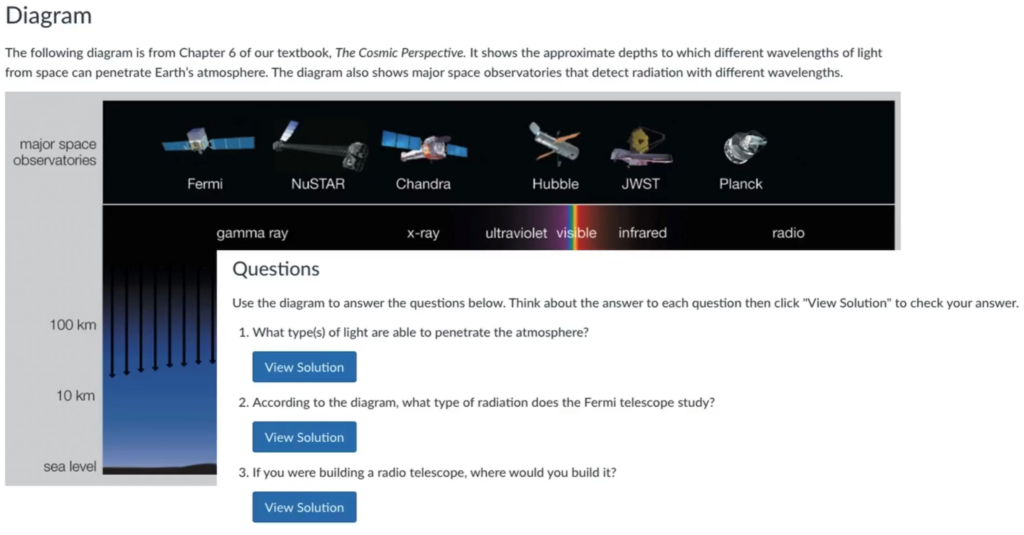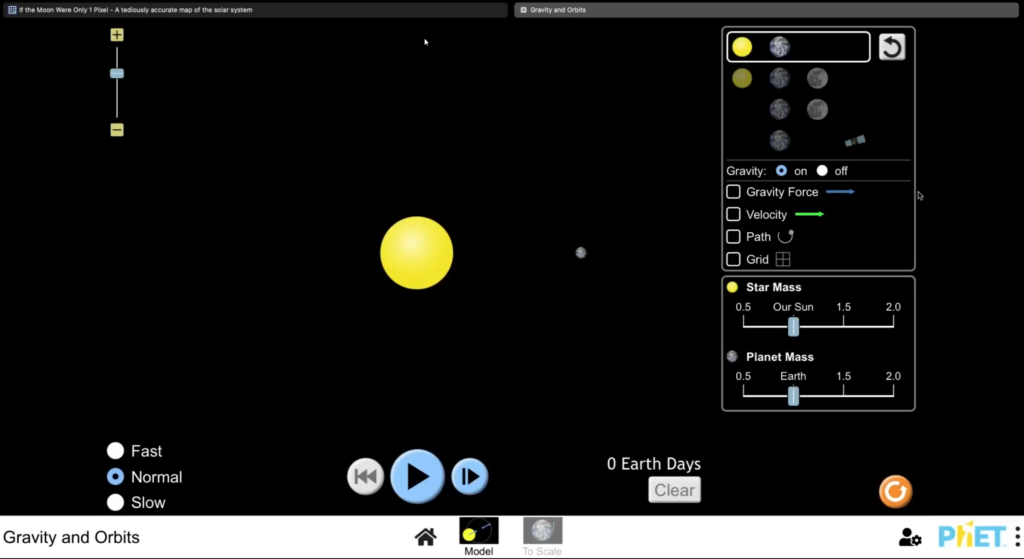Last updated on September 2, 2025
In the CTLD Course Development Cycle, MSU Denver instructors have the opportunity to work with the instructional design team to improve their courses. Instructors identify course objectives, develop learning activities, create user-friendly courses, record high-quality multimedia content, and much more. As part of the Spring 2023 development cycle, Dr. Kamran Sahami worked with a team on AST 1040 to implement formative assessments, represent diverse cultures, and support executive functioning.

Contents
Showcase Examples
Video
Example 1: Variety of Formative Assessments
Formative assessments are low-stakes activities that help students improve their understanding of a specific concept. Formative assessments provide feedback that helps students gauge their understanding of a concept and allows the instructor to assess student performance and support learners’ needs.
Dr. Sahami and the Center for Teaching, Learning and Design (CTLD) instructional design team developed various formative assessments for AST 1040, including simulation-based activities, knowledge checks, discussions, diagram analysis activities, demos, and a modeling activity.

Every assessment provided automatic or instructor-created feedback. The simulation-based activities used engaging resources such as the If the Moon Were Only 1 Pixel website and the Gravity and Orbits PhET simulation to let students play with complex scientific concepts in a low-stakes way. The diagram analysis activities guided students through interpreting complex graphs and images, a critical science literacy skill. Overall, the formative assessments give students real-time feedback which they can use to reflect on their learning and make decisions about how to further engage with course concepts.

Example 2: Representation of Diverse Cultures
Culturally Responsive Teaching (CRT) is the idea that learners’ diverse characteristics are valuable to the classroom community. When students see their culture represented in their courses and valued by their instructors, they may feel more included in the learning environment. Diversity is especially important in STEM fields, where many groups are often underrepresented.
AST 1040 uses CRT strategies to foster engagement and represent diverse learners. Dr. Sahami wanted his students to know that every single culture on Earth has studied the stars. He worked with the instructional design team to develop an infographic showing the developments in astronomy while Europe was in the “Dark Ages.” The infographic depicts discoveries made by astronomers in places such as India, Persia, Turkey, Syria, and Iran, who are often left out of Eurocentric accounts of the history of astronomy. Dr. Sahami also developed a discussion called “Astronomy Around the World.” In this discussion, students could pick any culture, research its discoveries and traditional beliefs related to astronomy, and share their findings with the class. “Indian, Mayan, Aztec, Egyptian, Nigerian, Chinese, Japanese, Korean, Mongolian, Polynesian, Aboriginal Australian, Persian, Babylonian, Hebrew, Assyrian, Navajo, Tupi, Dakota, Ojibwe, Inuit, Norse, Belarusian, and Romanian cultures” were listed as a few options. This representation of diverse cultures not only teaches students meaningful astronomy content but also helps all learners feel valued and included.
Example 3: Support for Executive Functioning
One of the guidelines in Universal Design for Learning (UDL) is Guideline 6: Provide Options for Executive Functions. It focuses on helping students set and meet their goals. AST 1040 demonstrates this guideline by supporting students in completing long-term projects that span over many weeks.
AST 1040 includes three projects in which students observe the sky. Each project requires multiple weeks of observations. Dr. Sahami noticed that students sometimes have trouble beginning their observations on time, making observations consistently, and keeping track of which observations are needed for each project. The instructional design team therefore adjusted the projects to support students’ executive functioning needs. They created a Data Collection Plan assignment that students complete in the first week of the course; this aligns with UDL Checkpoint 6.2 (“support planning and strategy development”). The team also developed a Projects Overview page, a dedicated Projects module, and weekly project reminders to improve organization. They then created templates for each project to reduce the organizational load on students; this aligns with UDL Checkpoint 6.3 (“facilitate managing information and resources”). Additionally, the due dates of the projects were staggered to better spread out the workload throughout the course. These changes not only help students complete their projects correctly and on time; they also model and teach the type of detailed planning and organization skills students will need to reach all sorts of goals in their lives.
Partnering for Continuous Improvement in Teaching and Learning
A significant factor in the success of this and similar projects is the support and funding from the Office of Online Learning (OOL), which has been instrumental in enhancing the quality of our online educational endeavors. OOL’s support and contributions have empowered faculty members to innovate and create a more enriching educational environment for all. Please visit the Office of Online Learning for more information about all that they are doing to help MSU Denver faculty members and students.
Want to get involved?
One way to find help with implementing student support in your course is the CTLD Course Development Cycle. This is an intensive but rewarding process where an instructional designer will work with you over several months to identify course objectives, develop learning activities, create a user-friendly course, record high-quality multimedia content, and much more.
Our instructional designers will help you build student support and implement them in your course. As compensation for the time and effort you spend developing your course, faculty are offered a $5,000 stipend for completing the development cycle. For courses that use OER, MSU Denver offers additional incentives.
For more information on the CTLD Development Cycle and how to apply to join, please read our CTLD Course Development Cycle spotlight.
Have questions?
Want help on this or other teaching and learning topics? Please visit us for drop-in support (10 am-3 pm, M-F) or try one of our self-help tutorials.